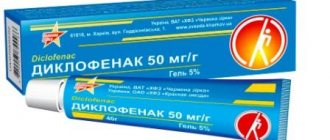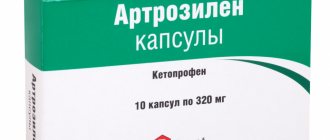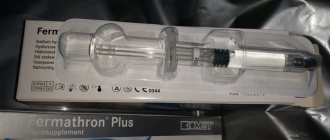Veprena
The drug is prescribed intranasally.
It is recommended to administer the nasal spray alternately: first into one or the other nasal passage.
For the treatment of osteoporosis: 200 IU per day is recommended.
In order to prevent progressive bone loss, adequate doses of calcium and vitamin D are recommended simultaneously with the use of the nasal spray. Treatment should be carried out over a long period of time.
For bone pain associated with osteoliosis and/or osteopenia: the daily dose is 200 - 400 IU daily. A daily dose of 200 IU can be administered at a time. Higher doses should be divided into several administrations. The dose should be adjusted to suit the individual needs of the patient. It may take several days to achieve the full analgesic effect. When carrying out long-term therapy, the initial daily dose is usually reduced and/or the interval between administrations is increased.
The duration of treatment is at least 3 months, if necessary it can be increased. The daily dose should be adjusted to suit the individual needs of the patient.
Paget's disease: daily dose of the drug 200 IU. In some cases, at the beginning of treatment, a dose of 400 IU per day may be required, given in several doses.
For Paget's disease, the duration of treatment should range from several months to several years. During treatment, there is a significant decrease in the concentration of alkaline phosphatase in the blood and the excretion of hydroxyproline in the urine, sometimes to normal values. In some cases, after an initial decrease in the values of these indicators, they may increase again. In these cases, the physician, guided by the clinical picture, must decide whether treatment should be discontinued and when it can be resumed. One or several months after discontinuation of treatment, bone metabolism disorders may recur; in this case, a new course will be required.
Neurodystrophic diseases: daily dose of the drug 200 IU, daily for 2-4 weeks. An additional dose of 200 IU is possible every other day for 6 weeks, depending on the dynamics of the patient’s condition.
Use in elderly patients and certain groups of patients: according to known data, elderly patients and patients with decreased renal or liver function do not need to change the dosage regimen of the drug.
Rules of application:
— Never shake the bottle, as this may lead to the formation of air bubbles inside the bottle and, as a result, incorrect dosing of the drug.
— First use: remove the protective cap, then, holding the device strictly vertically with one or two hands, press the piston three times, which will allow air to escape from the tube. Possible splashing of the solution is provided and does not affect the subsequent number of doses.
— Subsequent use: remove the protective cap. Tilt your head forward slightly and insert the tip into your nasal passage. For a more uniform distribution of the solution, the tip should be positioned in line with the nasal passage. Press the plunger once. Remove the tip from your nose and take several vigorous breaths through your nose to prevent the drug from leaking out. You should not clear your nose immediately after using the drug. If two injections are prescribed at one time, then the second injection should be made in the other nasal passage.
Gently wipe the tip with a clean, dry cloth, making sure to put on the protective cap.
Veprena 200me 14 doses 2 pcs. dosed nasal spray
Directions for use and doses
Intranasally, into one of the nasal passages. For the treatment of osteoporosis: the recommended dose is 200 IU/day. Along with the use of the nasal spray, it is recommended to prescribe adequate doses of calcium and vitamin D. Treatment should be carried out over a long period of time. For bone pain associated with osteolysis and/or osteopenia: the daily dose of the drug is 200–400 IU daily. A daily dose of 200 IU can be administered at a time. Higher doses should be divided into several administrations. The dose should be adjusted to suit the individual needs of the patient. It may take several days to achieve the full analgesic effect. When carrying out long-term therapy, the initial daily dose is usually reduced and/or the interval between administrations is increased. The duration of treatment is at least 3 months, if necessary it can be longer. The daily dose should be adjusted to suit the individual needs of the patient. Paget's disease: daily dose of the drug - 200 IU. In some cases, at the beginning of treatment, a dose of 400 IU/day may be required, given in several doses. For Paget's disease, the duration of treatment should range from several months to several years. During treatment, there is a significant decrease in the concentration of alkaline phosphatase in the blood and the excretion of hydroxyproline in the urine, sometimes to normal values. In some cases, after an initial decrease in the values of these indicators, they may increase. In these cases, the physician, guided by the clinical picture, must decide whether treatment should be discontinued and when it can be resumed. One or several months after discontinuation of treatment, bone metabolism disorders may recur; in this case, a new course will be required. Neurodystrophic diseases: in a daily dose of 200 IU, daily for 2–4 weeks. An additional dose of 200 IU is possible every other day for 6 weeks, depending on the dynamics of the patient’s condition. Use in elderly patients and certain groups of patients According to known data, elderly patients and patients with decreased renal or liver function do not need to change the dosage regimen of the drug. Directions for use: - Never shake the bottle, as this may lead to the formation of air bubbles inside the bottle and, as a result, incorrect dosing of the drug. — First use: remove the protective cap, then, holding the device strictly vertically with one or two hands, press the piston three times, which will allow air to escape from the tube. Possible splashing of the solution is provided and does not affect the subsequent number of doses. — Subsequent use: remove the protective cap. Tilt your head forward slightly and insert the tip into your nasal passage. For a more uniform distribution of the solution, the tip should be positioned in line with the nasal passage. Press the plunger once. Remove the tip from your nose and take several vigorous breaths through your nose to prevent the drug from leaking out. You should not clear your nose immediately after using the drug. If two injections are prescribed at one time, then the second injection should be made in the other nasal passage. Gently wipe the tip with a clean, dry cloth, making sure to put on the protective cap.
Indications for use of Vepren 200me 14 doses 2 pcs. dosed nasal spray
— treatment of postmenopausal osteoporosis; - bone pain associated with osteolysis and/or osteopenia; — Paget's disease (osteitis deformans); — neurodystrophic diseases (synonyms: algoneurodystrophy, Sudeck’s atrophy) of various etiologies, caused by various predisposing factors, incl. such as post-traumatic osteoporosis, reflex dystrophy, glenohumeral syndrome, causalgia, drug-induced neurotrophic disorders.
Contraindications
Hypersensitivity to synthetic salmon calcitonin or any other component of the drug. The drug is not recommended for use in children under 18 years of age due to the lack of data on efficacy and safety. Use during pregnancy and breastfeeding: Calcitonin does not have embryotoxic or teratogenic effects and does not penetrate the placental barrier. There are no clinical data on the safety of using the drug during pregnancy. In this regard, the drug should not be used in women during pregnancy. During drug therapy, it is recommended not to breastfeed, since it is unknown whether salmon calcitonin passes into breast milk.
Application of Vepren 200me 14 doses 2 pcs. dosed nasal spray during pregnancy and breastfeeding
Use during pregnancy and breastfeeding: Calcitonin does not have embryotoxic or teratogenic effects and does not penetrate the placental barrier. There are no clinical data on the safety of using the drug during pregnancy. In this regard, the drug should not be used in women during pregnancy. During drug therapy, it is recommended not to breastfeed, since it is unknown whether salmon calcitonin passes into breast milk. The drug is not recommended for use in children under 18 years of age due to the lack of data on efficacy and safety.
Side effects of Vepren 200me 14 doses 2 pcs. dosed nasal spray
Undesirable effects such as nausea, vomiting, dizziness, minor flushing, and arthralgia have been reported. Polyuria and chills may develop, which usually disappear on their own, and only in some cases require a temporary reduction in the dose of the drug. The incidence of adverse events possibly related to the use of the drug is assessed as follows: very often (≥ 1/10); often (≥ 1/100, Immune system disorders: rarely - hypersensitivity; very rarely - anaphylactic or anaphylactoid reactions, anaphylactic shock. From the nervous system: often - headache, dizziness, taste disturbances. From the sensory organs: sometimes - visual disturbances. From the cardiovascular system: often - hot flashes; sometimes - arterial hypertension. From the respiratory system: very often - pain in the nasal cavity, congestion, swelling of the nasal mucosa, sneezing, rhinitis, dryness in the nasal cavity, allergic rhinitis , erythema of the nasal mucosa, irritation, unpleasant odor, formation of excoriations in the nasal cavity; often - nosebleeds, sinusitis, ulcerative rhinitis, pharyngitis; sometimes - cough. From the digestive system: often - nausea, abdominal pain, diarrhea; sometimes - vomiting From the skin: rarely - generalized rash. From the musculoskeletal system: often - arthralgia; sometimes - pain in bones and muscles. From the urinary system: rarely - polyuria. General disorders and disorders at the injection site: often - increased fatigue; sometimes - flu-like syndrome, facial swelling, peripheral and generalized edema, rarely - chills; reactions at the injection site - itching.
Veprena®
The drug is used intranasally.
It is recommended to administer the nasal spray alternately: first into one or the other nasal passage.
For the treatment of osteoporosis:
200 IU per day is recommended.
In order to prevent progressive bone loss, adequate doses of calcium and vitamin D are recommended simultaneously with the use of the nasal spray. Treatment should be carried out over a long period of time.
For bone pain associated with osteolysis and/or osteopenia:
The daily dose of the drug is 200 - 400 IU daily. A daily dose of 200 IU can be administered at a time. Higher doses should be divided into several administrations. The dose should be adjusted to suit the individual needs of the patient. It may take several days to achieve the full analgesic effect. When carrying out long-term therapy, the initial daily dose is usually reduced and/or the interval between administrations is increased.
The duration of treatment is at least 3 months, if necessary it can be longer. The daily dose should be adjusted to suit the individual needs of the patient.
Paget's disease:
daily dose of the drug is 200 IU. In some cases, at the beginning of treatment, a dose of 400 IU per day may be required, given in several doses.
For Paget's disease, the duration of treatment should range from several months to several years. During treatment, there is a significant decrease in the concentration of alkaline phosphatase in the blood and the excretion of hydroxyproline in the urine, sometimes to normal values. In some cases, after an initial decrease in the values of these indicators, they may increase again. In these cases, the physician, guided by the clinical picture, must decide whether treatment should be discontinued and when it can be resumed. One or several months after discontinuation of treatment, bone metabolism disorders may recur; in this case, a new course will be required.
Neurodystrophic diseases:
daily dose of the drug is 200 IU, daily for 2-4 weeks. An additional dose of 200 IU is possible every other day for 6 weeks, depending on the dynamics of the patient’s condition.
Use in elderly patients and certain groups of patients
According to known data, elderly patients and patients with decreased renal or liver function do not need to change the dosage regimen of the drug.
Rules of application
— Never shake the bottle, as this may lead to the formation of air bubbles inside the bottle and, as a result, incorrect dosing of the drug.
— First use:
remove the protective cap, then, holding the device with one or two hands strictly vertically, press the piston three times, which will allow air to escape from the tube. Possible splashing of the solution is provided and does not affect the subsequent number of doses.
— Subsequent use:
remove the protective cap.
Tilt your head forward slightly and insert the tip into your nasal passage. For a more uniform distribution of the solution, the tip should be positioned in line with the nasal passage. Press the plunger once. Remove the tip from your nose and take several vigorous breaths through your nose to prevent the drug from leaking out. You should not clear your nose immediately after using the drug.
If two injections are prescribed at one time, then the second injection should be made in the other nasal passage.
Gently wipe the tip with a clean, dry cloth, making sure to put on the protective cap.


